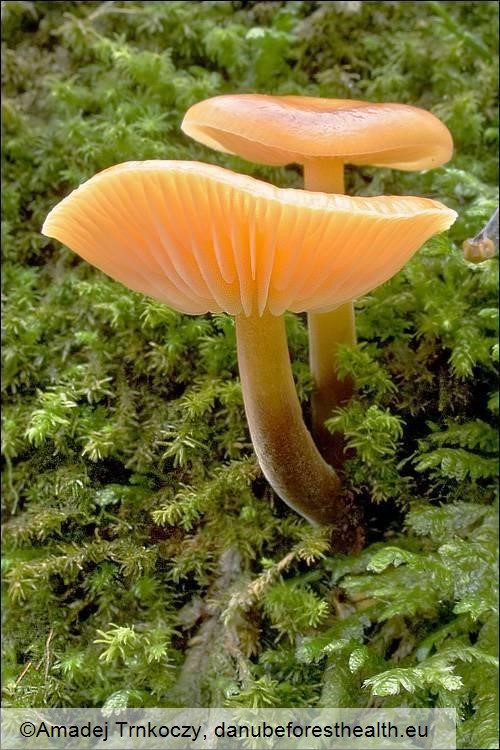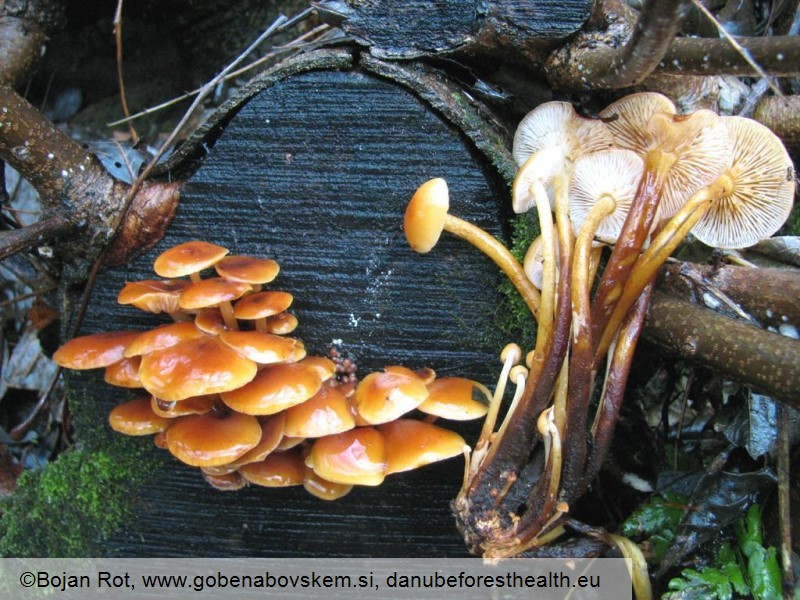Fungi
Winter fungus
Flammulina velutipes
Nikica Ogris, Thomas Cech
|
|

Fig. 1. Fruiting bodies of Flammulina velutipes

Fig. 2. Fruiting bodies of Flammulina velutipes
DETECTION PERIOD:
From September to March (during winter).
DESCRIPTION:
Fruiting in clusters on deciduous trees, logs, and stumps. Cap is slimy to tacky, smooth, reddish-brown to tawny, darker in the centre, 2.5–5 cm wide. Gills are attached, broad, whitish to yellowish. Spore print is white. Stipe is yellowish at the top, becoming darker toward the base due to dense, velvet-brown pubescence, 2.5–7.5 cm long and 3-5 mm thick, longer and whitish in darker environment. Ring is absent. Rhizomorphs are formed between the bark and rotten wood.
HABITAT:
Broadleaves, most frequently on lime, plane, ash, willow, horse chestnut and elms.
STATUS:
Widespread. It is very popular amongst mushrooms and it is also farmed and commercialized especially in the East as Enotake or Enoki-take.
IMPACT:
Saprobic, on dead stumps, roots or trunk.
SIMILAR SPECIES:
We can confuse it with the poisonous Galerina marginata. Flammulina velutipes can be distinguished by its shiny and sticky caps, white spores, and the absence of the ring on the stem. Galerina marginata presents brown caps and stipe and most notably has brown rusty spores It also tends to grow in isolated specimen and it presents a ring.
|